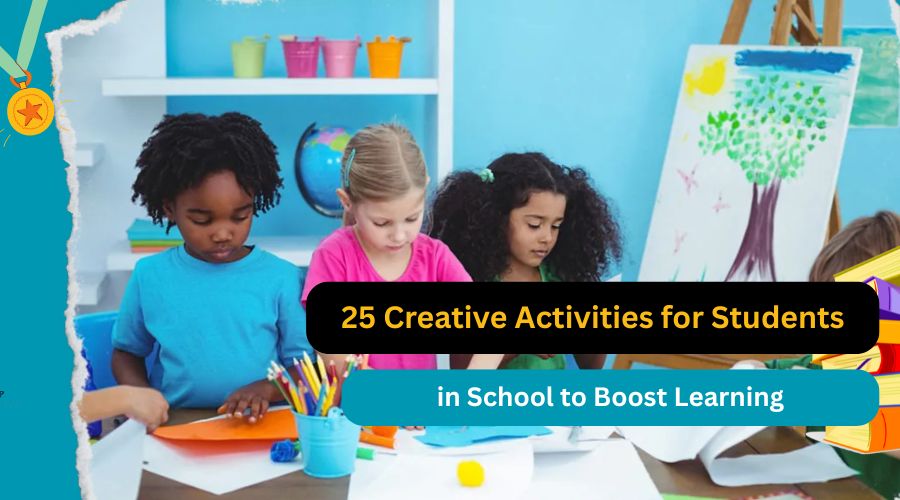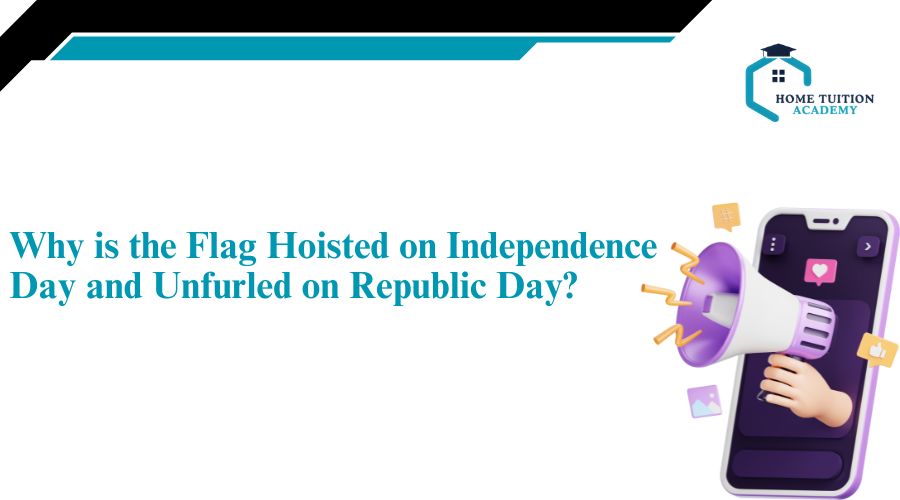In today’s rapidly changing world, creativity is one of the most important skills students can develop. While traditional rote learning helps build foundational knowledge, it often fails to engage young minds or prepare them for real-world challenges. That’s why creative activities for students in school are essential — they make learning fun, interactive, and deeply meaningful.
Whether it’s a primary classroom or a senior secondary class, integrating innovative classroom activities helps students think critically, solve problems, and express themselves confidently. This blog explores 25 exciting and practical ideas teachers and parents can use to boost engagement, build creative thinking, and develop life skills among students.
Benefits of Creative Activities in the Classroom
Including creative activities for students isn’t just about having fun — it significantly impacts a child’s growth and future success. Here’s why they matter:
Improves Retention & Understanding
When students engage creatively with lessons through drawing, storytelling, or hands-on activities, they remember concepts better than lectures alone.
Encourages Self-Expression
Creative activities allow students to express their ideas, feelings, and perspectives, helping them build confidence and communication skills.
Develops Critical Thinking & Problem-Solving
Interactive learning activities like puzzles, debates, and brainstorming sessions challenge students to think beyond memorization and develop real-life problem-solving abilities.
Promotes Collaboration & Teamwork
Group activities such as skits, model-making, or classroom projects teach students how to share ideas, listen to others, and work as a team.
Reduces Stress & Makes Learning Fun
Creative exercises break the monotony of regular classroom routines, reduce anxiety, and make students look forward to coming to school.
Fosters Innovation & Adaptability
Activities that encourage exploration help students learn to adapt, think out of the box, and develop a mindset for innovation — a crucial skill in today’s world.
A. Visual & Artistic Activities
1. Poster Making on Social Topics
Ask students to create posters on themes like environmental awareness, healthy habits, or social issues. This creative classroom idea combines art, research, and communication skills, helping students learn about important topics while expressing themselves visually.
🔹 Tip: Display the best posters on the classroom or school notice boards to motivate students!
2. Classroom Wall Art / Doodle Boards
Allocate a wall or large whiteboard in the class for students to contribute drawings, doodles, or inspirational quotes related to subjects being studied. This ongoing activity fosters creativity, team spirit, and a positive classroom environment.
3. Mind Mapping for Chapters
Teach students to create colorful mind maps for lessons, chapters, or projects. By breaking information into diagrams, students develop a better understanding, improve memory retention, and learn to organize their thoughts logically.
🔹 Example: Have students make a mind map of the food chain in biology or historical events in history class.
4. Origami Challenges
Introduce simple origami tasks related to geometry, animals, or festival decorations. Origami not only enhances fine motor skills but also teaches patience, sequencing, and spatial reasoning — important aspects of critical thinking.
🔹 Bonus idea: Organize a classroom origami competition for fun!
5. Infographic Creation
Assign students to design infographics summarizing a topic, like water conservation tips or steps in the scientific method. Infographics combine art, research, and concise writing, preparing students for modern communication tools.
🔹 Tools to use: Canva, Piktochart, or Google Slides.
🔑 Keywords naturally included: creative classroom ideas, innovative classroom activities, interactive learning activities for students.
B. Critical Thinking & Problem-Solving Activities (6–10)
6. Brainstorming Sessions
Pick a topic — like “How to make our school eco-friendly” — and let students share as many ideas as possible without judgment. Brainstorming teaches students that there’s no single correct answer, helping them think creatively and develop problem-solving skills.
🔹 Classroom tip: Assign a scribe to note down ideas on the board to keep everyone engaged.
7. Puzzle Challenges / Riddles
Give students logic puzzles, math riddles, or word games as part of regular classroom activities. Puzzles stimulate curiosity, improve concentration, and enhance analytical thinking, making learning interactive and exciting.
🔹 Example: Have a weekly “Puzzle Day” where students solve brain teasers individually or in groups.
8. Design Thinking Projects
Assign real-world problems like “redesign the classroom layout for better learning” or “create a lunchbox that keeps food warm.” Guide students through brainstorming, prototyping, and presenting their ideas — a perfect way to nurture innovation.
9. “What If” Scenario Discussions
Pose imaginative questions like “What if gravity stopped for a day?” or “What if animals could talk?” and let students discuss possible outcomes. These discussions spark curiosity, improve speaking skills, and train students to think beyond the obvious.
🔹 Classroom idea: Divide the class into groups and let them debate their scenarios.
10. Case Study Debates
Present a short case study — for example, a community dealing with water scarcity — and split the class into teams to discuss possible solutions. This activity builds critical thinking, decision-making, and teamwork.
🔹 Bonus: Encourage students to present their solutions visually using charts or drawings.
C. Verbal & Communication-Based Activities (11–15)
11. Classroom TED Talks
Assign each student a topic to research and present in a short “TED-style” talk. Topics can range from “My Favorite Invention” to “The Power of Kindness.” This activity helps students build public speaking skills, confidence, and research abilities.
🔹 Tip: Record presentations so students can watch and learn from their own performance.
12. Story Cubes (Storytelling Dice)
Use storytelling dice or picture cards to inspire creative stories. Each student rolls or picks a set of images and creates a story connecting them. This improves imagination, vocabulary, and sequencing skills.
13. Impromptu Speeches
Give students random topics — like “A Day on Mars” or “If I Were a Teacher” — and ask them to speak for 1–2 minutes without preparation. Impromptu speaking sharpens quick thinking, articulation, and poise under pressure.
🔹 Variation: Organize friendly competitions for added excitement.
14. Role-Playing Situations
Set up scenarios like “ordering food in a restaurant” or “debating a new school rule” and let students act them out. Role-playing improves empathy, listening, negotiation, and language skills in a fun, engaging way.
🔹 Classroom tip: Rotate roles so everyone gets a chance to lead and respond.
15. Interview Your Classmate
Pair students up to conduct short interviews about hobbies, dreams, or favorite books. Then have them introduce their partners to the class. This builds listening, questioning, and presentation skills while strengthening peer connections.
🔹 Bonus idea: Create a class “Student Profiles” wall using these interviews.
🔑 Keywords naturally included: creative activities for students in school, interactive learning activities, verbal activities for students.
D. Group & Team Activities (16–20)
16. Classroom Startup Challenge
Divide students into teams and ask them to invent a new product or service. They’ll brainstorm ideas, design a prototype, and pitch it to the class. This activity fosters creativity, entrepreneurship, teamwork, and presentation skills.
🔹 Extension idea: Invite teachers or senior students to judge the pitches.
17. Create a Skit or Play
Assign a topic, lesson, or social issue (e.g., bullying prevention) and let students write and perform a short skit. Acting out scenarios makes abstract concepts concrete and teaches cooperation, expression, and critical thinking.
🔹 Keyword focus: creative activities for students in school, best extracurricular activities for students.
18. Build a Product Prototype
Challenge teams to create a working model or simple prototype using everyday materials (e.g., build a bridge from straws or a solar oven). Prototyping develops practical problem-solving, design skills, and resourcefulness.
🔹 Classroom tip: Give students a budget of “classroom currency” to mimic real-world constraints.
19. Group Debates on Trending Topics
Choose age-appropriate topics like “Should school uniforms be mandatory?” and divide the class into pro/con teams. Debating builds critical thinking, persuasive speaking, research, and respectful disagreement skills.
🔹 Bonus: Rotate judges among students to develop evaluation abilities.
20. Host a Mini Model UN or Parliament
Assign countries, states, or roles (e.g., ministers) to students and recreate a mock United Nations or legislative debate on global or local issues. This immersive activity improves public speaking, research, collaboration, and awareness of current affairs.
E. Digital & Tech-Integrated Activities (21–25)
21. Create a Blog or Vlog Project
Let students maintain a personal blog or class vlog where they write or record about what they’re learning. Topics can include “My Favorite Historical Event” or “My Science Experiment.” This activity improves communication, tech skills, and digital confidence.
🔹 Tools: WordPress, Blogger, or YouTube
🔹 Skills developed: Writing, research, video creation, editing
22. Digital Poster or Video Campaign
Ask students to design posters or 1-minute videos on social issues like “Say No to Plastic” or “Save Water.” This teaches design thinking and visual storytelling using modern tools.
🔹 Tools: Canva, Adobe Express, InShot
🔹 Keyword focus: creative classroom ideas, innovative classroom activities
23. Create an Educational Game
Students can design simple board games or digital quizzes based on classroom topics (like a “Math Treasure Hunt” or “History Jeopardy”). This encourages collaboration, creativity, and subject mastery.
🔹 Tools: Kahoot, Quizizz, Google Slides
🔹 Bonus: Let students play each other’s games!
24. Virtual Field Trip Reflection
Take students on a virtual tour (like NASA, a historical site, or a zoo), then have them write or present what they learned. This blends digital exposure with reflection and critical analysis.
🔹 Websites: Google Arts & Culture, Discovery Education
🔹 Outcome: Enhances global awareness and digital literacy
25. Create a Presentation with AI Tools
Teach students to use AI tools like Canva Magic Write, Google Bard, or ChatGPT to research and create creative presentations on classroom topics. Guide them in using AI ethically and responsibly.
🔹 Focus: Digital responsibility, research, creative thinking
🔹 Keyword focus: interactive learning tools, tech-based learning activities
Tips for Teachers to Make Creative Activities More Effective
Integrating creative classroom activities isn’t just about having fun — it’s about making learning more impactful and student-centered. Here are some practical tips for educators to maximize results:
1. Align Activities with Learning Objectives
Every activity should support your academic goals. Whether it’s improving writing, boosting critical thinking, or understanding a science concept — make sure the creative task adds educational value.
🔹 Example: Use poster-making to reinforce environmental science lessons.
2. Customize Activities by Age & Skill Level
Adapt your activities to the students’ grade level and learning style. What works for Class 2 may not work for Class 9. For younger students, focus on hands-on, simple tasks; older students can handle research-heavy or tech-integrated projects.
3. Encourage Collaboration, Not Competition
Group activities should foster teamwork and inclusion. Avoid too much focus on winning — instead, celebrate participation, creativity, and effort.
🔹 Tip: Use peer feedback and group reflection instead of ranking teams.
4. Use Both Digital & Offline Tools
Balance screen time with hands-on experiences. Blend tech-integrated learning (e.g., digital storytelling) with manual tasks (e.g., skits, model-making) to ensure all students are engaged.
🔹 Tools to try: Canva, Google Slides, Quizizz, paper craft kits, whiteboards
5. Reflect, Discuss, and Celebrate
After every creative activity, take 10 minutes for group reflection. Ask questions like:
- What did we learn?
- What was challenging?
- What would we do differently next time?
This reflection improves self-awareness, reinforces learning, and builds confidence.
6. Create a Display or Sharing Space
Showcasing students’ work (via wall displays, class blogs, or presentations) boosts their pride and motivation. It also promotes a positive classroom culture where ideas and effort are celebrated.
7. Make It a Routine
Don’t wait for special occasions! Make creative thinking a weekly or bi-weekly practice. This consistency helps students become confident, expressive, and innovative learners.
Frequently Asked Questions (FAQs)
Why are creative activities important for students in school?
Creative activities make learning more engaging, improve problem-solving, and help students develop essential life skills like teamwork, communication, and innovation. They also encourage students to express themselves and think critically, which is vital for success in the modern world.
What are some easy creative activities teachers can start with?
Some easy yet effective ideas include poster making, storytelling, simple debates, origami, and group discussions. These require minimal resources but deliver maximum engagement and learning benefits.
How do creative activities support critical thinking skills?
Activities like puzzles, “what if” discussions, and design challenges push students to analyze situations, compare options, and come up with unique solutions. This strengthens their ability to think logically and creatively.
Can creative classroom activities improve academic performance?
Yes! Studies show that integrating creative activities in school increases students’ motivation and understanding of concepts, leading to better retention and improved academic outcomes.
Are these activities suitable for both primary and secondary students?
Absolutely. While the complexity can vary, activities like role-playing, mind mapping, or digital projects can be adapted for all age groups, from primary to senior secondary students.
How can teachers manage time while including creative activities in the syllabus?
Creative activities don’t have to take hours; even 10–15 minutes of a lesson can include an engaging task. Planning shorter, focused activities ensures they fit naturally within the curriculum.
What are the best digital tools for interactive learning activities?
For digital creativity, tools like Canva (design), Quizizz (quizzes), Kahoot (games), Google Slides (presentations), and even AI-based tools like ChatGPT can make learning exciting and interactive.





